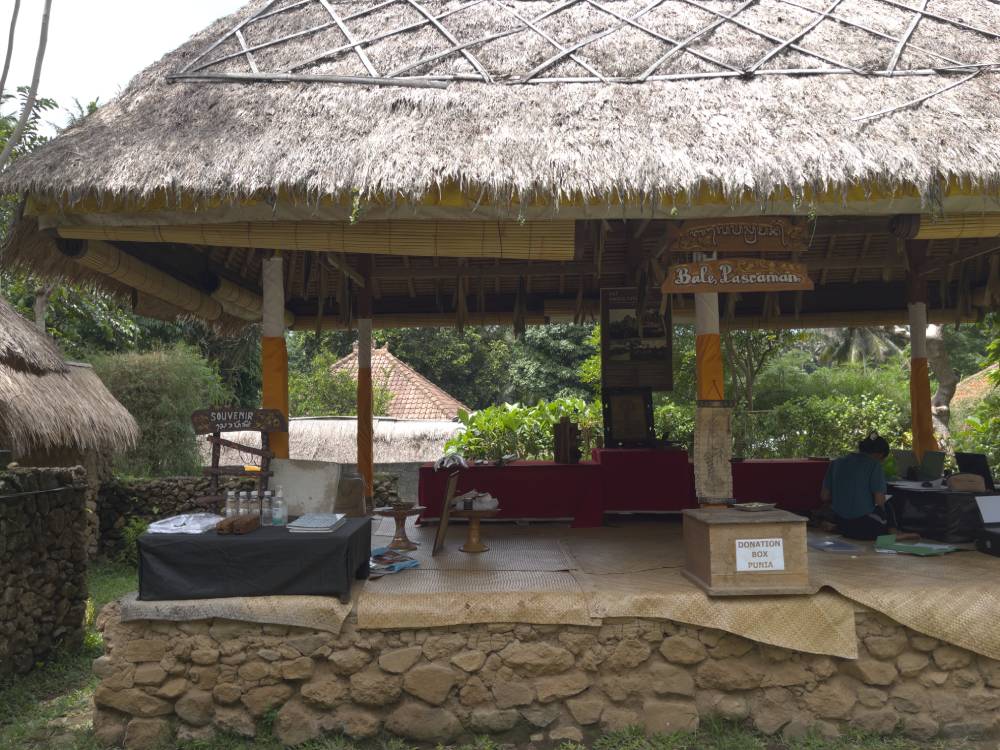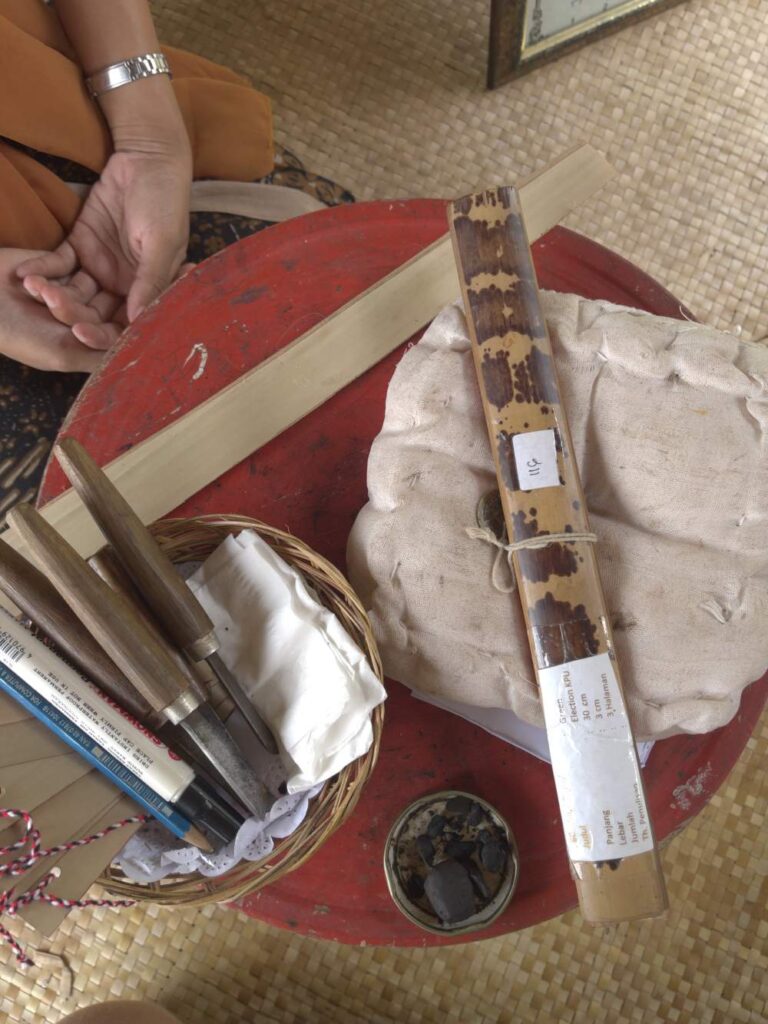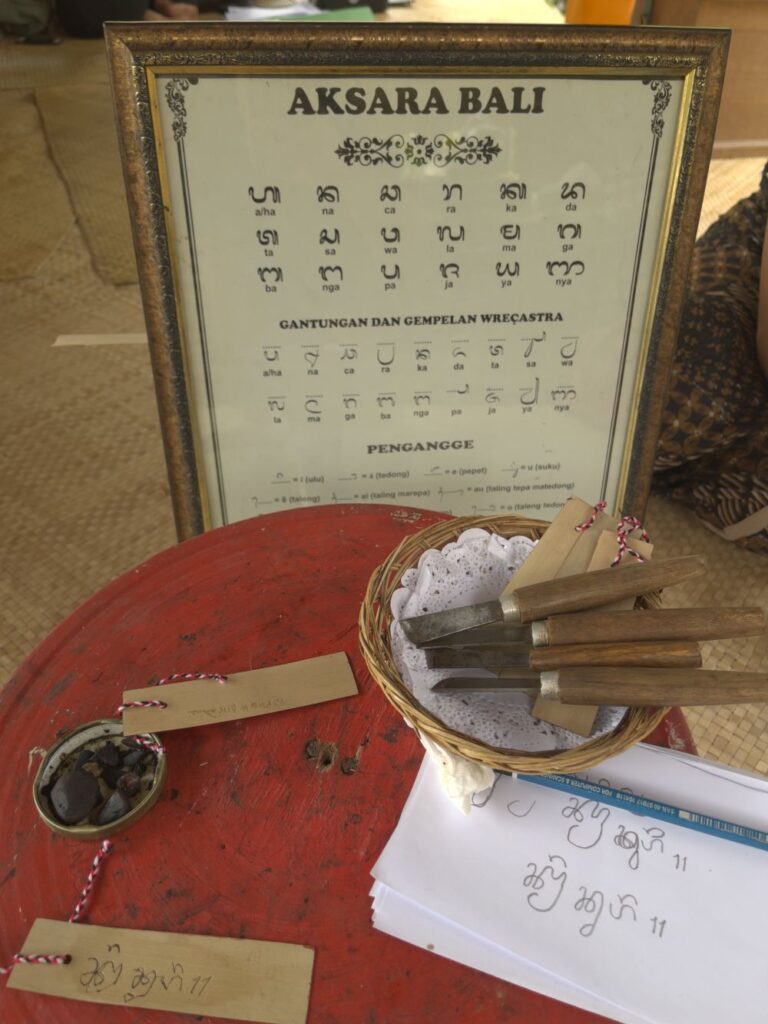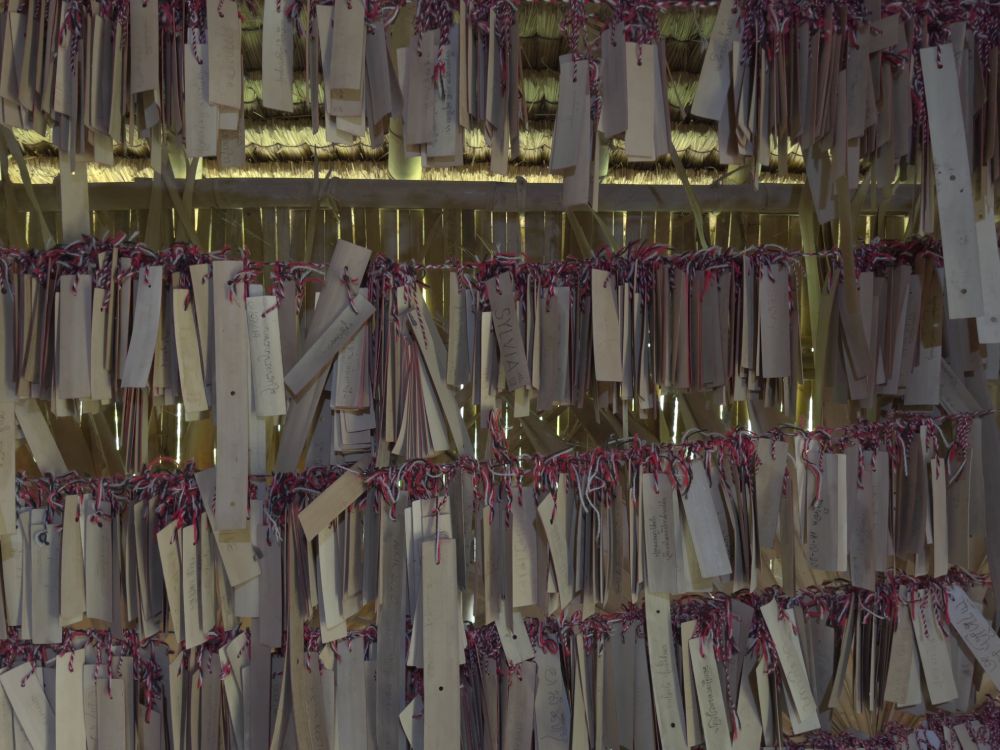
Long before paper was considered a common writing medium, the ancient Balinese had a rather unique way to preserve their knowledge. They wrote on palm-leaf manuscripts, known locally as lontar. Nowadays, however, this unique form of writing has faced erosion.
This is where Museum Pustaka Lontar (‘Lontar Library Museum’) emerges as a guardian, storing and conserving generational manuscripts of the community for future generations. It was opened in November 2017, acknowledged by lontar maestro Ida I Dewa Gede Catra and Dutch lontar researcher Professor Hinzler. Now, the museum serves as a destination for those keen to learn more about this traditional literary form, both visitors and residents alike.
Located in Karangasem, Bali’s most eastern regency, around 2-hours drive from Denpasar, the museum sits in the heart of rural Bali, surrounded by verdant rolling hillsides. As you step into the museum area, a warm welcome from the community awaits, guiding you to Bale Sangkul Putih. As you sit in the centre of the Bale, the passionate guides will share the story of lontar, from its meticulous preparation process to the significance of preserving this ancient tradition.

Museum Pustaka Lontar offers you more than just a mere encounter with literary artefacts. Beyond its role as a repository, it has become a venue for gatherings; a ‘clinic’ for lontar – where you can revive old, dirty, and broken manuscripts, eaten away by time; a place to transcribe the content of a lontars into Bahasa Indonesia or English; and a place to learn how to inscribe upon these rigid, hardened leaves.
Adorning Bale Sangkul Putih’s inner roof are broken lontars that can no longer be saved. These damaged manuscripts serve as poignant reminders of society’s tendency to overlook the significance of lontar. The museum endeavours to reverse this trend, fostering understanding and appreciation for this ancient craft.
The journey continues as you are introduced to a hands-on experience of writing on lontar. The guide offers assistance in crafting messages using aksara Bali (Balinese alphabet). Share what you want to write, and they will expertly translate it into aksara Bali. You are allowed to practice on paper, and once confident, proceed to write on the lontar.
Armed with a pengrupak, a knife-like tool used as a pen, you learn the art of writing on lontar. Holding the lontar on your left hand, you can start crafting words into its surface. The rhythmic sound of scraping, followed by the application of charred candlenut, and wiping off the residue with tissue will transforms the palm leaf into a canvas for your words.



Following that, you continue the journey to Bale Daja, where your lontar is tied to the wall, marking your presence as a visitor of the museum. Here, in addition to visitors writing, the museum stored scripture owned by members of the Penaban village.
The scriptures are usually stored in a special box made from teakwood and jackfruit wood called keropak. However, it is quite expensive to make keropak, so they do a collaborative effort with students from Melbourne in developing acid-tight paper containers. These innovative boxes work for a great alternative to protect lontars from termites and insects.
The villagers entrust their own scriptures on the hand of the museum because the meticulous care provided by the “lontar doctors” ensures preservation and accessibility. Any other villagers reluctant to part with their lontar find solace in the clinic’s outreach, where the “lontar doctors” providing their service by coming to them.

The journey ends in the ‘kitchen’, known as pewaregan. This is where the lontar are boiled for 8 hours in a special pot called jalikan. The lontars are boiled to close its pores, providing a smooth surface to write. It is boiled with herbs like ginger, salt, cumin, and ental tree skin to protect it from insects.
A lot are in the works here at the lontar museum, as they also see a future of building a showroom to display some of their ancient lontar. Through meticulous preservation, immersive experiences, and educational initiatives, this institution breathes life into the ancient craft – and preserving it for generations to come.
Museum Pustaka Lontar is open for visitors everyday from 8am to 5pm. The museum runs on donations from visitors, with a donation box provided at the Bale Sangkul Putih. It’s great destination in east Bali for those keen to immerse themselves in Balinese history and culture.
+6285829311338 (WA)
@museumpustakalontar
desawisatadukuhpenaban.com


